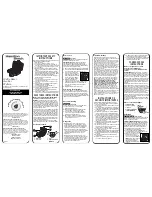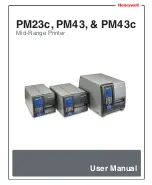
adapting your own recipes
After you have baked some of the recipes supplied, you
may wish to adapt a few of your own favourites, which
previously have been mixed and kneaded by hand. Start
by selecting one of the recipes in this booklet, which is
similar to your recipe, and use it as a guide.
Read through the following guidelines to help you, and be
prepared to make adjustments as you go along.
●
Make sure you use the correct quantities for the bread
maker. Do not exceed the recommended maximum. If
necessary, reduce the recipe to match the flour and
liquid quantities in the breadmaker recipes.
●
Always add the liquid to the bread pan first. Separate
the yeast from the liquid by adding after the flour.
●
Replace fresh yeast with easy blend dried yeast. Note:
6g fresh yeast = 1tsp (5ml) dried yeast.
●
Use skimmed milk powder and water instead of fresh
milk, if using the timer delay setting.
●
If your conventional recipe uses egg, add the egg as
part of the total liquid measurement.
●
Keep the yeast separate from the other ingredients in
the pan until mixing commences.
●
Check the consistency of the dough during the first few
minutes of mixing. Bread machines require a slightly
softer dough, so you may need to add extra liquid. The
dough should be wet enough to gradually relax back.
removing, slicing and storing bread
●
For best results, once your loaf is baked, remove it
from the machine and turn out of the bread pan
immediately, although your bread maker will keep it
warm for up to 1 hour if you are not around.
●
Remove the bread pan from the machine using oven
gloves, even if it is during the keep warm cycle. Turn
the pan upside-down and shake several times to
release the cooked bread. If the bread is difficult to
remove, try gently knocking the corner of the bread
pan on a wooden board, or rotate the base of the shaft
underneath the bread pan.
●
The kneader should remain inside the bread pan when
the bread is released, however occasionally it may
remain inside the loaf of bread. If so, remove it before
slicing the bread, using a heat resistant plastic utensil
to prise it out. Do not use a metal implement as this
may scratch the non-stick coating on the kneader.
●
Leave the bread to cool for at least 30 minutes on a
wire rack, to allow the steam to escape. The bread will
be difficult to slice if cut hot.
storing
Home-made bread does not contain any preservatives so
should be eaten within 2-3 days of baking. If not eating
immediately, wrap in foil or place in a plastic bag and seal.
●
Crispy French-style bread will soften on storage, so is
best left uncovered until sliced.
●
If you wish to keep your bread for a few days, store in
the freezer. Slice the bread before freezing, for easy
removal of the amount required.
17
Содержание BM900 series
Страница 1: ...BM900 series ...
Страница 3: ... ...
Страница 4: ...1 2 3 7 8 9 13 14 15 19 20 ...
Страница 5: ...4 5 6 10 11 12 16 17 18 1 12 1kg 1 5kg ...
















































